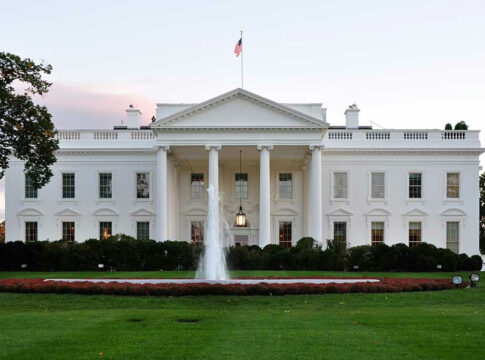This review delves into the fascinating YouTube video titled “Inside the White House Secret Rooms,” which reveals the clandestine world beneath America’s most iconic building, leaving viewers astonished by the unseen layers of security and crisis management.
A Hidden Fortress Below
The White House may welcome 10,000 visitors weekly, but few realize the extent of its hidden depths. Beneath the sprawling lawns and historic facade lies a fortified complex designed for crisis management. This secret infrastructure wasn’t part of the original design when architect James Hoban envisioned a modest executive mansion. His lack of foresight nearly cost the nation dearly during the War of 1812 when British forces set the White House ablaze, exposing its vulnerabilities.
In the aftermath of these historic events, modern architects and planners recognized the need for a more secure infrastructure. The hidden world within the White House was conceived to ensure that government operations could continue seamlessly during emergencies. This concept took a tangible form in the creation of the Presidential Emergency Operations Center (PEOC), a bunker designed to protect the leadership in times of national crisis.
The Birth of the PEOC
The PEOC’s necessity became strikingly apparent during the events of late 2001 when America was under attack. Vice President Dick Cheney was hurriedly escorted to this underground sanctuary, a stark reminder of the unpredictable nature of global threats. The existence of the PEOC is a testament to the lessons learned from past oversights, ensuring that the country’s leaders have a safe haven to strategize and manage crises.
The PEOC is more than just a bunker; it is a sophisticated command center equipped to support critical decision-making processes. Its design considers the worst-case scenarios, providing a secure environment where communication and leadership can persist without interruption, shielding national governance from chaos.
Security Beyond Aesthetics
The White House’s transformation from a mere residence to a stronghold highlights the interplay between aesthetics and security. While the visible structure remains a symbol of democracy, its unseen layers serve as a bulwark against potential threats. This dual nature underscores the importance of preparedness in an era where security challenges evolve rapidly.
The secret rooms and hidden corridors are not just relics of paranoia but are integral to maintaining national stability. The existence of these facilities reflects a pragmatic approach to governance, where the preservation of order is paramount. As geopolitical tensions fluctuate, the need for such security measures becomes increasingly evident, validating their presence beneath the public’s gaze.
Lessons from the Past
The story of the White House’s secret rooms is a narrative of adaptation and foresight. From the ashes of the 1814 fire to the heightened security post-2001, each layer of protection speaks to a history of learning and evolving. These concealed spaces symbolize resilience, a testament to the enduring strength of American governance.
In conclusion, the YouTube video “Inside the White House Secret Rooms” provides a rare glimpse into the unseen infrastructure that safeguards national leadership. It compels viewers to appreciate the complexities of security planning and the quiet diligence that ensures the continuity of government amidst turmoil. The hidden White House within the White House stands as a sentinel of stability, ready to face the challenges of an uncertain future.

